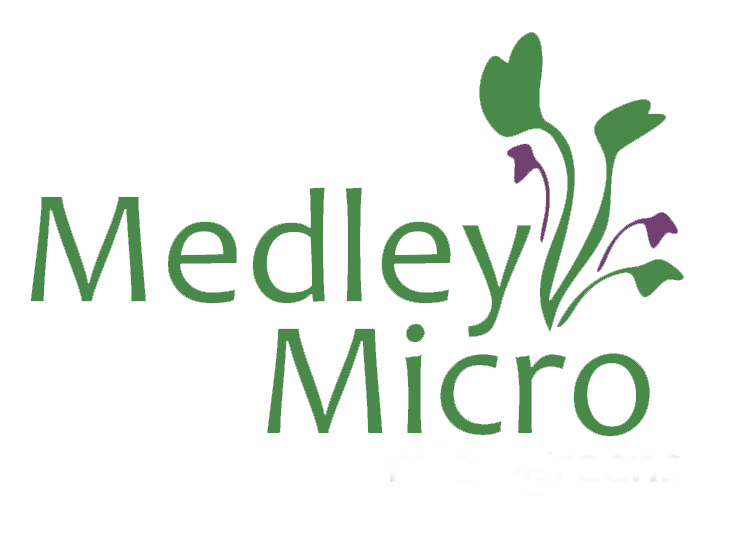Pea Microgreens Nutrition and Benefits
Pea Microgreens - Photo by Robert Stickle
Pea microgreens, the young shoots of the pea plant, have gained popularity due to their delicate texture, sweet flavour, and impressive nutritional profile. Harvested just 10 to 14 days after planting, these tender greens are a powerhouse of essential vitamins, minerals, and antioxidants, making them a valuable addition to a balanced diet.
Nutritional Profile
A single cup (approximately 100 grams) of fresh pea microgreens provides a wealth of nutrients:
Vitamin C: Offers about 50% of the recommended daily allowance (RDA), boosting the immune system and aiding in collagen production.
Vitamin A: Contains 2% of the RDA, supporting vision and skin health.
Vitamin K: Essential for blood clotting and bone health.
Folate (Vitamin B9): Provides 10.5% of the RDA, crucial for DNA synthesis and cell division.
Iron: Delivers 10% of the RDA, vital for oxygen transport and energy production.
Manganese: Contributes 10.6% of the RDA, playing a role in metabolism and bone formation.
Choline: This supplies 10.5% of the RDA and is important for liver function and brain development.
Protein: Approximately 2 grams per cup, aiding muscle repair and growth.
Dietary Fibre: Around 3 grams per cup, supporting digestive health and promoting satiety.
Health Benefits
1. Immune System Support: The high vitamin C content enhances immune function, helping the body fend off infections and illnesses.
2. Antioxidant Properties: Rich in antioxidants like beta-carotene and lutein, pea microgreens combat oxidative stress, potentially reducing the risk of chronic diseases.
3. Heart Health: Nutrients such as folate, fibre, and antioxidants contribute to cardiovascular well-being by supporting healthy blood pressure and cholesterol levels.
4. Bone Health: Vitamin K and manganese are essential for maintaining strong bones and preventing osteoporosis.
5. Digestive Health: Dietary fibre aids in digestion and promotes a healthy gut microbiome.
6. Energy Production: Iron and B vitamins play key roles in energy metabolism, helping to reduce fatigue and improve overall vitality.
Culinary Uses
Pea microgreens are versatile and can enhance a variety of dishes:
Salads: Add a fresh, sweet crunch to mixed greens (or just make a microgreen salad).
Sandwiches and Wraps: Incorporate them for added texture and nutrition.
Smoothies: Blend them in for a nutrient boost without significantly altering the flavour.
Stir-Fries: Toss in at the end of cooking for a delicate, crisp addition.
Garnishes: Add to the top soups, omelets, or grilled dishes for visual appeal and added flavour.
Conclusion
Incorporating pea microgreens into your diet is an easy and delicious way to enhance your nutritional intake. Their rich array of vitamins, minerals, and antioxidants supports overall health, from boosting immunity to promoting heart and bone health. Whether added to meals or grown at home, pea microgreens are a valuable addition to a health-conscious lifestyle.
Disclaimer: This article and the associated website do not provide medical or nutritional advice. The information and material contained on this website are for informational and/or entertainment purposes only. No material on this site is a substitute for professional medical advice, diagnosis, or treatment.
Always seek your physicians’ or qualified nutritionists’ advice before undertaking a new healthcare regimen or using any information you have read on this website to treat or prevent any condition.
Resources:
https://www.cleaneatingkitchen.com/pea-microgreens/
https://microgreensworld.com/pea-microgreens-nutrition/
https://www.longislandmicrogreens.com/blogs/news/pea-microgreens-fight-disease-cancer-and-promote-good-health
https://homemicrogreens.com/pea-shoot-benefits/

